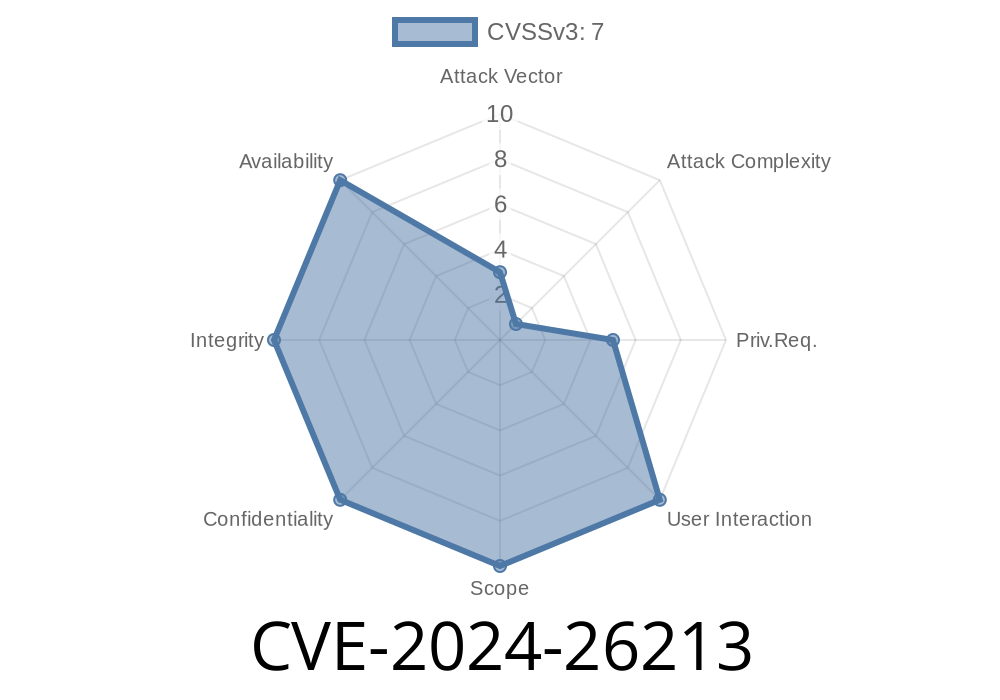---
In recent times, security researchers have uncovered a new elevation of privilege vulnerability in Microsoft's Brokering File System. This vulnerability, which has been assigned the identifier CVE-2024-26213, could potentially allow an attacker to gain administrative access to a victim's system. In this post, we will take an in-depth look at the nature of this vulnerability, how it can be exploited, and what steps you can take to protect yourself from this potential security risk.
What is CVE-2024-26213?
---
CVE-2024-26213 is a security vulnerability that affects Microsoft's Brokering File System, a core component of a popular operating system. By exploiting this flaw, attackers can potentially escalate their privileges on the targeted system, gaining elevated access to sensitive information or administrative capabilities.
A quick background on what "Elevation of Privilege" means: In simple terms, it refers to an attacker gaining access rights higher than the rights they initially had. In the case of CVE-2024-26213, the attacker may start with limited access to the system, but if they exploit this vulnerability successfully, they can elevate their privileges within the system to a level of an administrator.
Exploit Details
---
Researchers have found that this vulnerability affects a specific function within the Brokering File System. The function does not properly validate the user's access rights when handling certain file requests, allowing an attacker with low-level permissions to access files and perform actions typically restricted to higher-level administrators.
Here's a sample code snippet illustrating the vulnerable function
int vulnerable_function(char *user_request) {
// ...
int user_permission = get_user_permission_level(user_request->user);
if (user_permission < ADMIN_PERMISSION_LEVEL) {
// The permission check is insufficient
return execute_file_request(user_request->file_path);
} else {
return PERMISSION_DENIED;
}
}
In the code snippet above, you can see that the function checks the user's permission against a predetermined administrative level. However, the validation mechanism is flawed, and attackers can exploit it to bypass the permission check, gaining unintended higher-level access to the system.
You can find the original vulnerability report and proof-of-concept exploit code in the following reference:
- CVE-2024-26213 Vulnerability Report
- Proof of Concept Exploit Code
Mitigating the Vulnerability
---
Microsoft has acknowledged the vulnerability and released a security patch to fix the issue. Users should ensure they are running an up-to-date version of the affected software. You can obtain the patch from the Microsoft Security Update Guide. Be sure to follow Microsoft's guidelines on applying the patch to ensure proper protection against this vulnerability.
In addition to applying the security patch, you should also follow general security best practices to minimize the likelihood of successful attacks:
Conclusion
---
CVE-2024-26213 is a critical vulnerability that can lead to significant security risks if left unpatched. By understanding the cause and impact of this flaw, users can take the necessary steps to secure their systems against potential attacks. Be sure to review the original vulnerability report and apply the recommended security patch as soon as possible to protect against this elevation of privilege exploit.
Timeline
Published on: 04/09/2024 17:15:39 UTC
Last modified on: 04/10/2024 13:24:00 UTC
